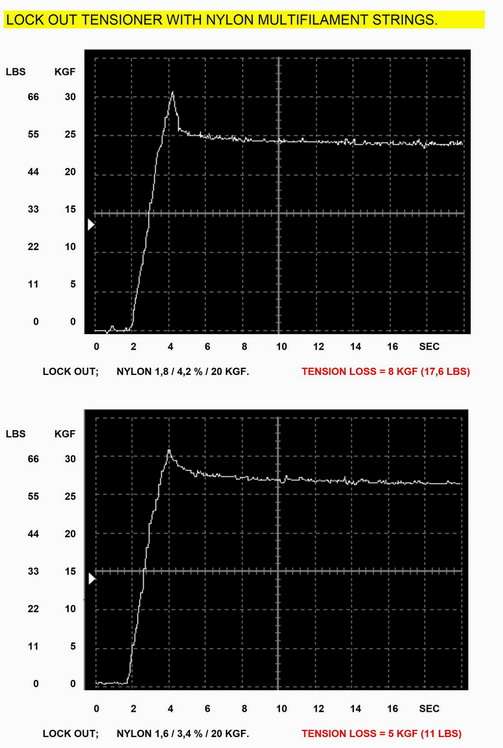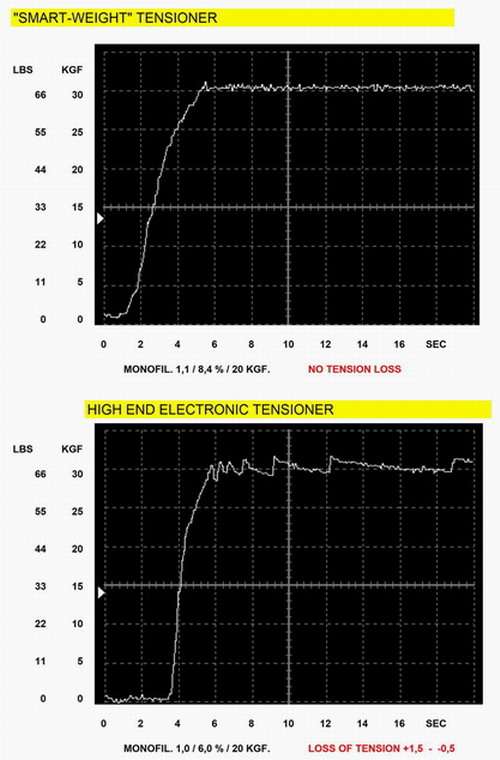Irvin
Talk Tennis Guru
But how long will it take? I'd guess on the order of > 1yr. This is assuming like you said that there are no weak spots. (String jobs typically don't break at knots unless it was operator error, so it's a valid assumption). Also assume the string isn't subject to ridiculous temperature/environmental variance [this includes prolonged exposure to sunlight {on the order of >8 hrs a day}].
I think the paperclip example is a little extreme, but the tensile strength of the nylon is really, really high (relatively speaking).
My guess is less than one year. And yes string jobs do not normally berak at the knot but then again you don't have a constant tension on the string for a year either. When you clamp off the only force left is the frame. The string under its preset tension is the only force except for hitting the ball. I think less than one year. I will keep the bucket suspended in my basement storage area - temperature controlled (somewhat) and no sunlight what so ever.
Irvin





